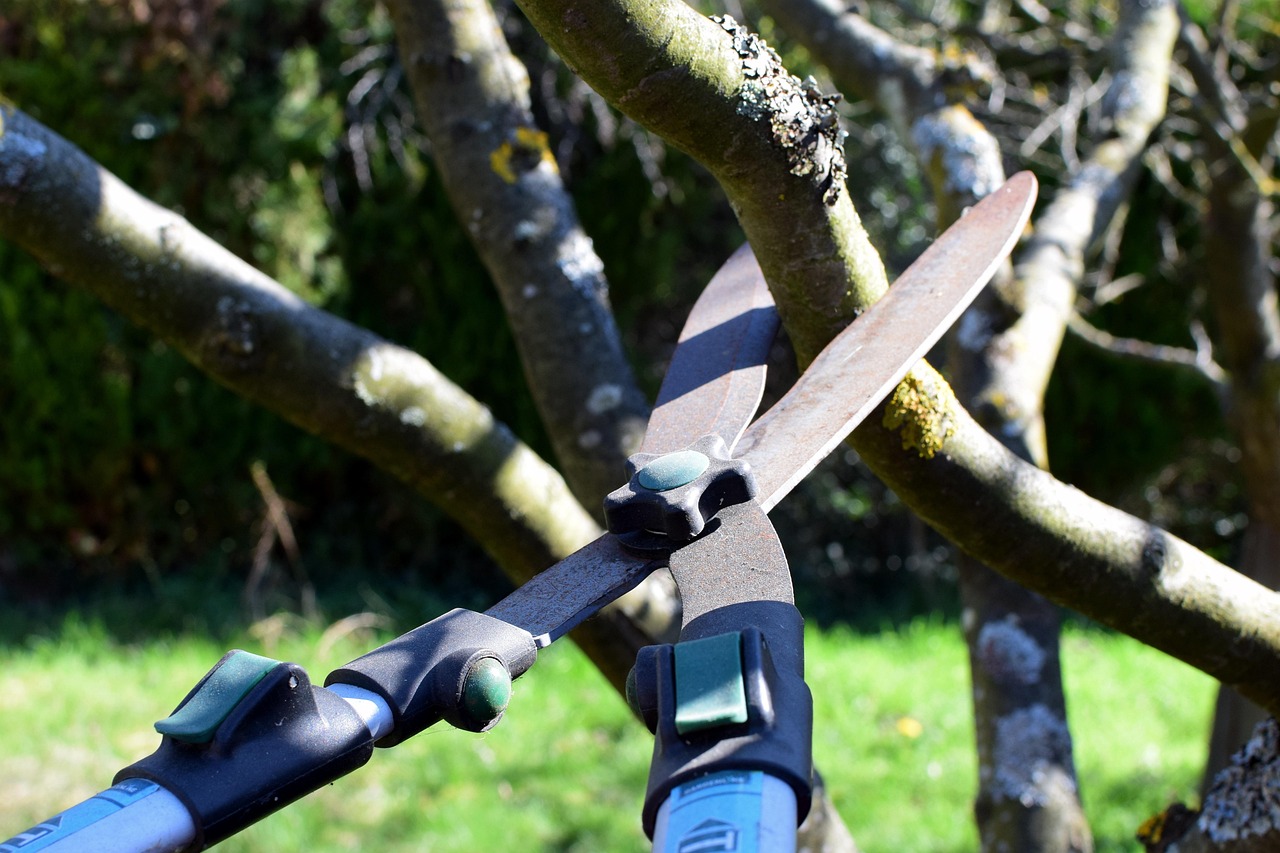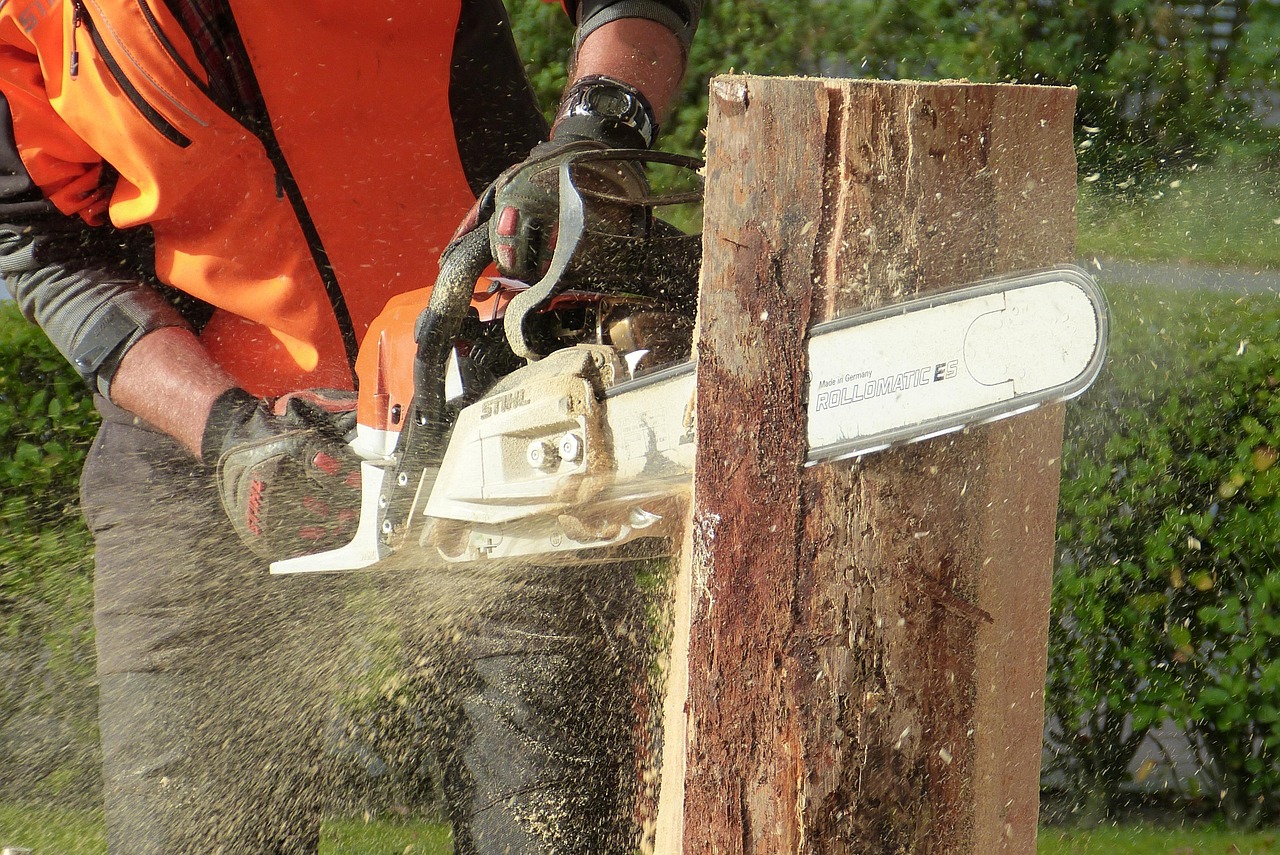Young citrus tree pruning in greenhouse farming is essential for promoting healthy growth, maximizing fruit production, and maintaining tree structure. Proper techniques help trees develop strong branches and improve air circulation, which reduces disease risk.
Pruning young citrus trees is a critical practice for greenhouse farmers. It helps shape the tree, allowing it to grow in a way that maximizes sunlight exposure and air circulation. This is particularly important in a greenhouse environment where humidity levels can be higher than in traditional outdoor settings. By managing the growth of young trees through pruning, farmers can ensure that their citrus plants develop strong structures and yield more fruit over time.

Understanding the right time to prune is key. Typically, young citrus trees should be pruned during their dormant season, which varies depending on the specific variety and climate conditions. Pruning at this time reduces stress on the plant and encourages new growth in the spring. However, light pruning can also be done during the growing season to maintain shape and remove any dead or unhealthy branches.
Benefits of Pruning Young Citrus Trees
Pruning offers numerous benefits for young citrus trees. The following list outlines some of the most significant advantages:
- Improved Air Circulation: Pruning helps open up the canopy, allowing air to flow freely through the branches. This reduces humidity levels around the leaves and minimizes the risk of fungal diseases.
- Enhanced Sunlight Exposure: By removing excess branches, sunlight can reach more parts of the tree. This is crucial for photosynthesis, which promotes overall growth and fruit development.
- Stronger Structure: Young citrus trees benefit from pruning as it encourages the development of strong central leaders and well-spaced lateral branches.
- Increased Yield: Proper pruning can lead to higher fruit production by encouraging healthier growth patterns and improving fruit size.
Another important aspect of pruning is the technique used. Each cut should be made carefully to avoid damaging the tree. The following table summarizes some essential pruning techniques for young citrus trees:

| Technique | Description |
|---|---|
| Heading Cuts | This technique involves cutting back a branch to a bud. It promotes bushier growth. |
| Thinning Cuts | This involves removing entire branches to reduce density. It enhances airflow and light penetration. |
| Pinching | This method removes the tips of young shoots to encourage branching and bushiness. |
When considering how much to prune, it is important to follow the “one-third rule.” This guideline suggests not removing more than one-third of the tree’s total foliage in a single season. Over-pruning can stress the plant and hinder its growth. A gradual approach allows the tree to recover and adapt more effectively.
Tools are also an essential part of successful pruning. A few recommended tools include:
- Hand Pruners: Ideal for small branches and delicate cuts.
- Loppers: Useful for cutting thicker branches that are too large for hand pruners.
- Saws: Necessary for larger limbs or when making significant structural changes to the tree.
It is advisable to keep tools clean and sharp. Dirty tools can spread diseases between plants, while dull tools can create jagged cuts that slow healing. Regular maintenance of pruning equipment ensures better results and healthier trees.

After pruning, monitoring the tree’s response is vital. Farmers should watch for signs of stress, such as wilting leaves or stunted growth. Adjustments may be needed if any issues arise. Providing adequate nutrients and water after pruning can help support recovery and encourage new growth.
In summary, young citrus tree pruning is a fundamental practice in greenhouse farming that promotes health, structure, and productivity. Understanding the techniques, timing, and tools required for effective pruning will help farmers achieve their desired outcomes with their citrus crops.
Timing and Frequency of Pruning
Understanding the right timing for pruning young citrus trees is essential to their health and productivity. Pruning should align with the growth cycle of the tree. Generally, there are two primary times when pruning is most effective: during the dormant season and during the growing season.

Pruning During Dormant Season
Pruning while the tree is dormant, typically in late winter or early spring before new growth begins, allows for minimal stress on the plant. During this period, the tree conserves energy, making it more resilient to cuts. Additionally, dormant pruning encourages vigorous growth once the temperatures rise. Key considerations for dormant season pruning include:
- Timing: Aim to prune about six weeks before the last expected frost to avoid damage from late cold snaps.
- Focus: Concentrate on shaping the tree and removing any dead or diseased wood.
- Tools: Use sharp tools to ensure clean cuts that heal quickly.
Pruning During Growing Season
Light pruning can also be beneficial during the growing season. This is particularly useful for maintaining the shape of the tree and removing any branches that may be crossing or crowded. However, it is crucial to avoid heavy pruning during this time as it can lead to stress. Key practices for summer pruning include:
- Observation: Assess the tree’s growth and remove any weak or unhealthy branches as needed.
- Minimize Cuts: Limit cuts to no more than 10-15% of the tree’s foliage to prevent shock.
- Watering: Ensure adequate watering after pruning to support recovery.
Techniques for Effective Pruning
Employing the right techniques during pruning can significantly influence the growth and health of young citrus trees. Here are some effective pruning techniques that every greenhouse farmer should know:
Making Proper Cuts
The way cuts are made can determine how well a tree heals and how new growth develops. Here are some guidelines:
- Angle of Cuts: Always cut at a slight angle to allow moisture to run off and prevent rot.
- Cutting Back: For branches that need to be shortened, cut just above a bud that faces outward to encourage outward growth.
- Removing Suckers: Remove any suckers or water sprouts, as they divert energy from fruit production.
Identifying Branch Types
Understanding the different types of branches on a citrus tree can help in making better pruning decisions. The main branch types include:
- Main Leaders: The primary vertical stems of the tree that establish its height.
- Lateral Branches: Side branches that contribute to the overall shape and fullness of the canopy.
- Fruit Spurs: Short branches that produce flowers and fruit. Care should be taken not to remove these excessively.
Common Mistakes to Avoid
Even experienced gardeners can make mistakes when pruning young citrus trees. Awareness of these pitfalls can help farmers maintain healthy trees. Some common mistakes include:
- Over-Pruning: Removing too many branches can lead to stress and reduced fruit production.
- Poor Tool Maintenance: Using dull or dirty tools can cause injury to the plant and spread diseases.
- Ignoring Tree Structure: Failing to maintain a proper shape can lead to weak branches that are prone to breakage.
Pest and Disease Management Post-Pruning
After pruning, it’s essential to monitor for pests and diseases, as open wounds can attract harmful insects or pathogens. Implementing good management practices can mitigate these risks. Consider the following strategies:
- Sanitizing Tools: Clean tools with alcohol or a bleach solution before and after use to prevent disease spread.
- Avoiding Excess Water: Ensure proper drainage in the greenhouse to reduce humidity levels around pruned areas.
- Pest Control Measures: Regularly inspect trees for signs of pests such as aphids or scale insects and apply organic pesticides as necessary.
Pest and disease management is an ongoing process that requires vigilance after pruning. Farmers should regularly check their trees for symptoms of distress and take immediate action if any issues arise.
Nutritional Support After Pruning
Nutritional support plays a critical role in helping young citrus trees recover after pruning. Providing the right nutrients can promote strong new growth and enhance overall plant health. Key nutritional considerations include:
- Fertilization: Apply a balanced fertilizer high in potassium and magnesium after pruning to support new growth.
- Soil Quality: Ensure that soil is well-draining and rich in organic matter to support root health.
- Irrigation Practices: Adjust watering schedules based on weather conditions, ensuring trees receive adequate moisture without becoming waterlogged.
This careful attention to nutrition will help young citrus trees thrive post-pruning, contributing to their long-term health and productivity in greenhouse farming environments.
Environmental Factors Affecting Pruning
Environmental factors play a significant role in the effectiveness of pruning young citrus trees in greenhouse farming. Understanding these factors can help farmers make informed decisions about the best practices for their specific conditions. Key environmental aspects to consider include:
Temperature and Humidity
Temperature and humidity levels in a greenhouse can greatly influence tree health and growth. High humidity can increase the risk of fungal diseases, while inadequate humidity can lead to stress. Here are some guidelines regarding temperature and humidity:
- Optimal Temperature Range: Citrus trees thrive in temperatures between 65°F and 85°F. Maintaining this range encourages healthy growth and recovery post-pruning.
- Humidity Control: Using dehumidifiers or proper ventilation can help keep humidity levels in check, reducing the risk of disease.
- Temperature Fluctuations: Avoid large temperature swings, as they can stress the trees and hinder recovery.
Light Exposure
Light is crucial for photosynthesis and overall plant health. In a greenhouse setting, providing adequate light exposure is vital for young citrus trees. Consider the following:
- Natural Light: Ensure that trees receive at least 6-8 hours of direct sunlight daily. If natural light is limited, consider using supplemental grow lights.
- Light Distribution: Prune trees to allow light to penetrate the canopy evenly, ensuring that all branches receive sufficient light for growth.
- Monitoring Shade: Be mindful of any structures or other plants that may cast shade on young citrus trees, impacting their growth.
Common Citrus Tree Varieties in Greenhouses
Different citrus tree varieties may respond differently to pruning techniques. Understanding the specific needs of various types can help farmers optimize their practices. Below is a list of some common varieties grown in greenhouses:
| Citrus Variety | Characteristics |
|---|---|
| Navel Orange | Sweet, seedless fruit with a thick rind; requires regular pruning for optimal fruit production. |
| Valencia Orange | Juicy and sweet; known for its high yield; benefits from shaping during early growth stages. |
| Mandarin | Small and easy to peel; often less vigorous than other varieties; requires careful pruning to maintain shape. |
| Lemon (Eureka) | Sour fruit with a high vitamin C content; needs regular pruning to manage size and encourage branching. |
When choosing a citrus variety for greenhouse farming, consider factors such as growth habit, disease resistance, and market demand. Understanding these characteristics allows farmers to tailor their pruning techniques effectively.
Pest Identification and Control Strategies
Managing pests is crucial for maintaining healthy young citrus trees. After pruning, exposed areas can attract pests that may harm the plant. Identifying common pests and implementing control strategies can protect the trees. Some common pests include:
- Aphids: Small, green or black insects that suck sap from new growth. Control by introducing beneficial insects like ladybugs or using insecticidal soap.
- Citrus Leaf Miner: Larvae tunnel through leaves, causing damage. Preventative measures include maintaining tree health and using sticky traps.
- Scale Insects: Small, immobile pests that attach themselves to stems and leaves. Use horticultural oils to smother them effectively.
Integrated Pest Management (IPM)
An effective approach to pest control is using Integrated Pest Management (IPM). This method combines multiple strategies to manage pests while minimizing harm to beneficial organisms. Key components of IPM include:
- Monitoring: Regularly check trees for signs of pest activity and assess their population levels.
- Physical Controls: Use barriers such as row covers to protect trees from pest infestations.
- Chemical Controls: Apply pesticides as a last resort, choosing products that are least harmful to beneficial insects.
Disease Management in Young Citrus Trees
Disease prevention is as crucial as pest control in maintaining the health of young citrus trees. Common diseases that affect citrus include:
- Citrus Canker: A bacterial disease causing lesions on leaves and fruit; control by removing infected parts and applying appropriate treatments.
- Powdery Mildew: Fungal growth on leaves; improve air circulation through pruning and apply fungicides if necessary.
- Citrus Greening Disease (HLB): A serious disease transmitted by the Asian citrus psyllid; early detection is key, along with removal of infected trees.
Farmers should regularly inspect their trees for symptoms of diseases and take action promptly. Implementing good cultural practices, such as proper watering and fertilizing, can also help minimize disease risks.
The Role of Training Young Citrus Trees
Training young citrus trees goes hand in hand with pruning. Proper training helps establish a strong foundation for the tree’s structure. This section will outline training techniques that complement pruning efforts.
Cultivating Strong Leaders
The central leader is crucial for the overall shape of the tree. To cultivate strong leaders:
- Selecting the Leader: Choose the strongest, healthiest stem to serve as the main leader during early growth phases.
- Pinching Back Branches: Regularly pinch back lateral branches to encourage upward growth of the leader.
- Tie Supporting Sticks: Use stakes or ties to support the leader until it can stand independently.
Shaping the Canopy
A well-shaped canopy allows for optimal light exposure and airflow. Techniques for shaping include:
- Crown Thinning: Remove excess branches in the center of the canopy to improve light penetration.
- Crown Lifting: Remove lower branches to create space underneath the tree for maintenance and harvesting.
- Encouraging Outward Growth: Prune branches that grow inward towards the center of the tree to promote an open structure.
This combination of pruning and training ensures young citrus trees develop a robust structure that can support healthy growth and abundant fruit production in greenhouse environments.
Maintaining Young Citrus Trees Post-Pruning
Once young citrus trees have been pruned, ongoing maintenance is crucial for ensuring their continued health and productivity. This phase involves monitoring growth, adjusting care practices, and preparing for future pruning sessions. Here are several key areas to focus on after pruning:
Monitoring Growth Patterns
After pruning, it is essential to observe how the tree responds. Monitoring growth patterns helps identify any issues early on. Consider the following:
- New Growth: Keep an eye on new shoots and leaves. Healthy growth indicates that the tree is recovering well.
- Branch Development: Watch for the development of lateral branches. Ensure that they are spaced correctly and growing outward.
- Overall Health: Check for any signs of stress or disease, such as discoloration or wilting leaves.
Adjusting Care Practices
Care practices may need adjustment based on the tree’s response to pruning. These adjustments can include:
- Watering Frequency: After pruning, trees may require more frequent watering to support new growth. Check the soil moisture regularly to avoid under or over-watering.
- Nutrient Adjustments: Based on growth observations, consider modifying fertilizer applications. A nutrient boost may be necessary if growth appears slow.
- Pest and Disease Monitoring: Continue to inspect trees for pests and diseases regularly. Quick interventions can prevent larger issues from developing.
Preparing for Future Pruning
Preparation for future pruning sessions should begin soon after the initial pruning. Establishing a pruning schedule can help maintain the tree’s structure and health. Here are some suggestions:
- Annual Pruning Schedule: Plan to prune young citrus trees annually during their dormant season. This regularity will help maintain desired shapes and sizes.
- Documentation: Keep records of what was pruned and when. Documenting each session helps track growth patterns and informs future practices.
- Evaluate Techniques: After each pruning session, evaluate the effectiveness of your techniques. Make adjustments as needed based on results.
Integrating Technology in Citrus Tree Care
In modern greenhouse farming, technology can play a significant role in managing young citrus trees. Various tools and systems can enhance monitoring and care practices:
- Soil Moisture Sensors: These devices help track soil moisture levels, ensuring proper watering schedules based on real-time data.
- Climate Control Systems: Automated systems can regulate temperature and humidity levels inside the greenhouse, creating optimal conditions for growth.
- Pest Detection Systems: Advanced technologies, such as pheromone traps or insect cameras, can help monitor pest populations and allow for timely interventions.
Incorporating these technologies can lead to more efficient management practices and healthier citrus trees over time.
Final Thoughts
Young citrus tree pruning is a critical aspect of greenhouse farming that significantly influences tree health, structure, and fruit production. By understanding the appropriate techniques, timing, and ongoing care requirements, farmers can ensure that their young trees thrive. The combination of pruning, training, and diligent maintenance creates a solid foundation for future growth and productivity.
The integration of environmental considerations, technology, and careful monitoring allows farmers to optimize their practices effectively. As greenhouse farming continues to evolve, staying informed about best practices in young citrus tree care will provide a competitive edge in producing high-quality fruit.
In conclusion, a comprehensive approach to young citrus tree pruning enhances not only the health of the trees but also the overall success of greenhouse farming operations. By investing time and resources into proper pruning techniques and ongoing maintenance, farmers can look forward to bountiful harvests and flourishing citrus crops for years to come.
